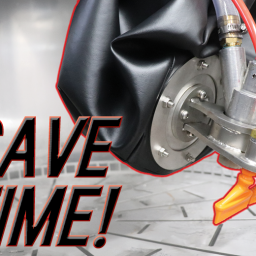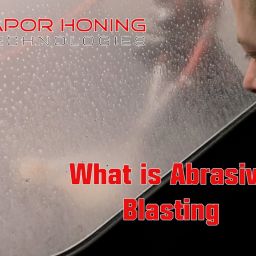The Key Benefits of Vapor Abrasive Blasting
Blast cleaning techniques have been used in America ever since sandblasting was invented back in the 1800s. Abrasive blasting equipment helps you to clean surfaces and objects quickly and thoroughly.
However, sandblasting is no longer the popular choice in both Europe and the US. Now the wet blasting machine industry is currently worth $55 billion and is set to grow by 2024.
So why are these machines so popular across the United States? To really understand this, you need to take a look at some of the key benefits of using abrasive blasting equipment.
Well, you’re in the right place! Read on to find out about all the benefits that vapor blasting has to offer!
What is Abrasive Blasting?
You may already have heard of vapor blasting. This is also known as wet blasting, vapor honing, dustless blasting, or simply vapor blasting. Abrasive blasting is used loosely within the industry to describe an abrasive blasting process mostly referring to dry blast however there are many forms of abrasive blasting.
Whatever the name you choose to use, this process refers to using a combination of water, abrasive particles, and compressed air to clean an object or surface. This is an effective way to clean quickly and thoroughly without producing excessive amounts of debris.
You can use abrasive blasting equipment on a range of different surfaces, including metal, stone, and concrete. For example, you could use it to clean graffiti off a wall or to clean the patio in your garden.
Abrasive vapor blasting is suitable for domestic or industrial cleaning.
How Does Vapor Abrasive Blasting Work?
As we’ve already mentioned, abrasive vapor blasting uses three key elements. These are water, compressed air, and organic abrasive particles, such as:
- Glass Bead
- Aluminum oxide
- Silicone Carbide
- Soda Blast
The type of abrasive particles you use depends a lot on the job you want to do. For example, glass bead particles are very fine making them ideal to use on items for polishing or general cleaning. In contrast, much heavier particles, such as aluminum oxide, can also be used to de burr or cut surfaces and remove tougher materials.
Wet blasting combines water with the abrasive particles of your choice. The equipment then blasts these onto the surface you want to clean using compressed air.
As the particles hit whatever you want to remove they break it up and wash it away. This means you can then rinse the surface and the remaining debris will wash away.
Vapor Blasting vs. Sandblasting
If you have already heard of vapor blasting, then you may also be aware of sandblasting. This was the original blast cleaning technique used in America.
Sandblasting, unlike vapor blasting, doesn’t involve mixing abrasive particles with water. Instead, it targets the area you want to clean by directing dry particles at it at high-pressure.
However, the use of water in vapor blasting makes a huge difference to the outcome of this procedure. This has made vapor blasting increasingly popular since the 1960s.
While both methods will clean effectively, sandblasting produces a lot of dust and debris that can become airborne while you work. Vapor blasting also produces this debris but the water used immediately dampens this and weighs it down. This means that you don’t get a lot of dust flying around while you work.
To understand the benefits of this better, let’s take a look at some of the key benefits of vapor blasting compared to sandblasting.
Vapor Blasting Makes Cleaning Quicker
As you can imagine, if sandblasting a surface produces a lot of debris (which it inevitably does) this adds to the cleaning you have to do after blasting. Once you’re done cleaning you will need to vacuum or rinse down any surfaces covered in debris.
In comparison, any debris left after vapor blasting is wet and is, therefore, easier to contain and clear up.
After vapor blasting, you simply need to wipe or rinse down the area you’ve cleaned. The surrounding area should be as it was before you started! Who doesn’t want to save on a cleaning job?
Vapor Blasting is Safe
The dust that gets thrown up when blast cleaning anything is not just a nuisance though. In fact, it can pose a serious health and safety issue.
When dust and debris become airborne it is easy for you to inhale them if you aren’t wearing the proper protective clothing. This might not sound like the most dangerous thing in the world. But it means you risk inhaling tiny particles of toxic matter.
This can lead to serious respiratory conditions, such as silicosis. This is why the use of sandblasters is now banned in the United Kingdom and Europe. In the US, sandblasters are still allowed, however, there are strict restrictions on how long you can use them for and where.
On top of this, the dust produced by sandblasters can make using them more dangerous in certain environments. For example, when cleaning surfaces in factories that handle oil, dust clouds can increase the chance of a dangerous fire breaking out.
Thankfully, you won’t encounter any of these issues when using vapor blasting instead. While the dust and debris are still present they become weighed down by the water used and won’t become airborne.
Vapor Blasting Lets You Work Efficiently
Vapor blasting is a great way to clean quickly and thoroughly. It allows you to clean small cracks and grooves that would be almost impossible to reach by dry blasting. This is mainly because of the flow based cleaning process.
As we’ve also already mentioned, using a vapor blaster involves a lot less clean up afterward compared to using a sandblaster. However, this isn’t the only reason that abrasive vapor blasting is a more efficient way to clean.
Due to the safety restrictions in place for using sandblasters, you can only use them for short spells of time. You are also more limited on where you can use them. For example, there are additional restrictions on using them in urban areas or indoors.
This means that you have to take regular breaks when using a sandblaster, so your job will take longer. This isn’t an issue when vapor blasting and – because it’s safer – you will be able to work alongside other people.
This means that multiple people can get things done in the same area while you use a vapor blasting machine. So you can save a lot of time. Vapor blasters are also placed beside sensitive equipment such as CNC machines because of the limited dust emitted.
Vapor Blasting is Gentle on Surfaces
Cleaning metals and other delicate surfaces without damaging them can be a nightmare. Scrubbing, scratching, and harsh chemicals can all result in serious damage and this limits your cleaning options.
Fortunately, abrasive vapor blasting offers the perfect solution. The water used creates a kind of protective layer between the surface you are cleaning and the abrasive particles. This cushions some of the direct impact preventing scratching and other damage.
This is why vapor blasting is a popular method used in historic restoration. Using water, instead of sandblasting or harsh chemicals prevents irreversible damage to many delicate items.
If you have to clean a reactive metal surface, you can use a rust-inhibiting solution before and after cleaning or even add it during process to help with flash rusting.
Using Vapor Blasting is Environmentally Friendly
Harsh chemicals don’t just cause damage to sensitive surfaces. They are also extremely bad for the environment. Using them in big quantities releases pollutants and other toxic fumes into the air.
Vapor blasting offers a more environmentally-friendly cleaning solution. This is because you can choose to use biodegradable cleaners with abrasives in your blaster or cabinet. So when you wash away any debris left at the end of cleaning you can be sure you haven’t left pollutants lying around.
Some types of blasting equipment are more environmentally-friendly than others. For example, blasting cabinets allow you to reuse your abrasive particles and dispose of the cleaning debris properly. To understand this better, we’ll take a look at some of the different types of vapor blasting equipment in just a moment.
Vapor Blasting is Versatile
There are loads of great ways that you can use abrasive vapor blasting equipment. To really understand this, here are a few of the uses it has across different industries in America today:
- Historic restoration
- Cleaning up grease and oily parts in reman factories
- In automotive factories and automotive restoration
- Carbon fiber bonding
- Cleaning airplane components
- Motorcycle restoration
- Diesel and performance engine building
- Jewelry cleaning
- Cutting tools
- De-burring CNC machined parts
As you can see, this benefits a huge number of industries across the country. You can also use abrasive vapor blasting at home for DIY projects and home renovations.
Choosing the Right Type of Abrasive Blasting Equipment
To really make the most of everything that vapor blasting has to offer, it is important you choose the right abrasive blasting equipment for you.
All vapor blast equipment works by combining water with abrasive particles. However, different equipment does this in different ways.
To understand this better (and help you find the right equipment), let’s take a look at some of the different options available when it comes to vapor blasting.
Blasting Cabinets and Rooms
Blasting cabinets, chambers, or rooms are contained enclosures that you can put an object into before abrasive blasting.
These use a pre-mixed slurry of water and abrasive particles and let you clean an entire object in one go. This is extremely useful for cleaning car engine parts, for example.
The main limitation of cabinets is their size. You can only clean objects that will fit inside the blasting chamber. So you can’t use these pieces of equipment to clean surfaces such as walls.
Flexible Abrasive Blasting Equipment
There are two main types of flexible abrasive blasting equipment that combine the water and abrasive particles before they leave the nozzle. This makes for much more effective dust suppression. These are:
- Modified sandblasters
- Vapor abrasive blaster
Both hold the slurry of water and abrasive particles under pressure. Modified sandblasters use air pressure while vapor abrasive blasters use water pressure.
Modified sandblasters then use the venturi effect to draw this mixture in the flow of compressed air and out of the nozzle. This offers a little less flow control, as the venturi effect is harder to control.
In contrast, vapor abrasive blasters inject the water-abrasive mixture into the flow of compressed air. This allows much more control when using the blaster, which means you can be precise in your cleaning.
Vapor abrasive blasters offer the best possible dust suppression, even compared to modified sandblasters. They are also extremely efficient so you won’t waste water or your abrasive particles when using them.
Find Your Perfect Vapor Abrasive Blaster Today!
As you can see, there are loads of great benefits to using abrasive blasting equipment for your cleaning. Not only is this equipment efficient and thorough, but it also protects you and the people around you.
So what are you waiting for? Check out all of our latest vapor abrasive cleaning equipment and get geared up today!








